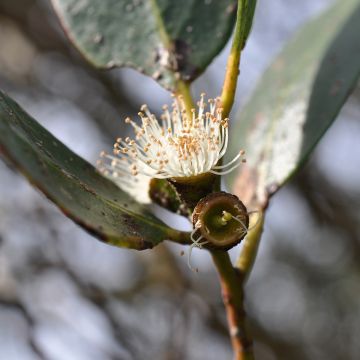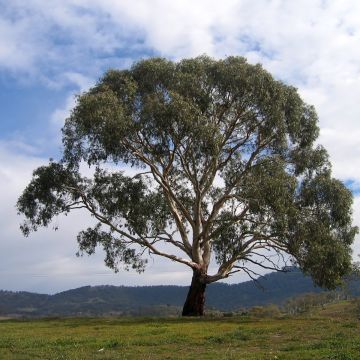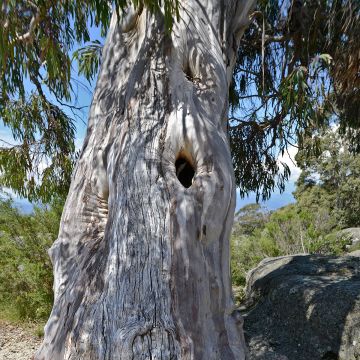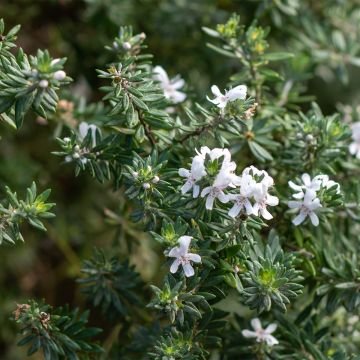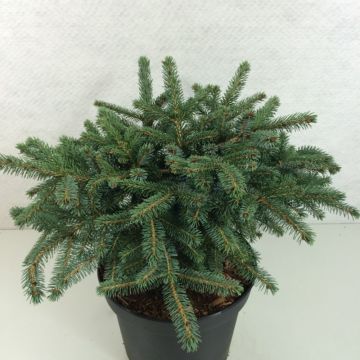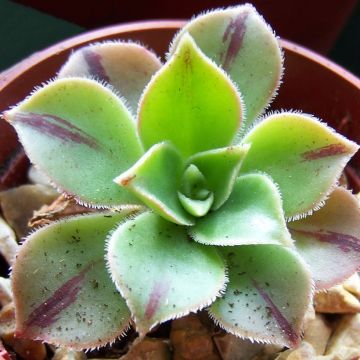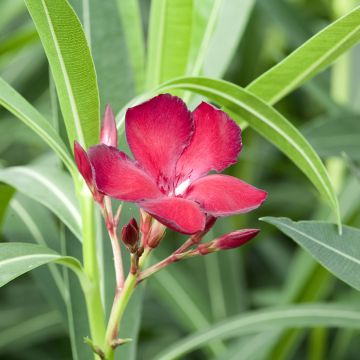

Eucalyptus cinerea Silver Dollar - Gommier cendré


Eucalyptus cinerea Silver Dollar - Gommier cendré


Eucalyptus cinerea Silver Dollar - Gommier cendré


Eucalyptus cinerea Silver Dollar - Gommier cendré


Eucalyptus cinerea Silver Dollar - Gommier cendré
Eucalyptus cinerea Silver Dollar
Eucalyptus cinerea Silver Dollar
Argyle apple
This item cannot be shipped to the selected country
Delivery charge from €5.90
Delivery charge from €5.90
Delivery charge from €5.90
More information
Schedule delivery date,
and select date in basket
This plant carries a 24 months recovery warranty
More information
We guarantee the quality of our plants for a full growing cycle, and will replace at our expense any plant that fails to recover under normal climatic and planting conditions.
From €5.90 for pickup delivery and €6.90 for home delivery
Express home delivery from €8.90.
From €5.90 for pickup delivery and €6.90 for home delivery
Express home delivery from €8.90.
From €5.90 for pickup delivery and €6.90 for home delivery
Express home delivery from €8.90.
Does this plant fit my garden?
Set up your Plantfit profile →
Description
Eucalyptus cinerea 'Silver Dollar' is a selection of the ash gum highly appreciated in floristry for the beauty of its juvenile foliage with metallic reflections reminiscent of silver dollars. In the garden, this eucalyptus is interesting for its reasonable growth and relative hardiness. It quickly forms a small tree with picturesque bark, decorative throughout the year. Whether planted individually, in clumps or as a hedge, Eucalyptus always brings an exotic and elegant touch to the garden. This Silver Dollar variety can also be grown in containers, with regular pruning. Its foliage is pleasantly aromatic and reputed to repel mosquitoes. It is easy to maintain and adapts to all well-drained soils, not too dry and not chalky. It requires full sun to give its best.
The Silver Dollar eucalyptus is a small tree from the myrtle family. The cinerea species is native to southeastern Australia. The Silver Dollar selection is fast growing and has a naturally spreading habit, with some branches trailing on the ground. At the age of 10, this small tree will reach about 10 m (32 ft 10 in) in height and 5-6 m (16 ft 5 in-19 ft 8 in) in width if not pruned. Eventually, it can reach 15 m (49 ft 2 in) in height and 10 m (32 ft 10 in) in width. Pruned every year in spring, it will be wider and extremely dense, but shorter. 'Silver Dollar' has evergreen foliage in winter, which releases a minty aroma when crushed. It should be noted that this selection hardly develops any adult leaves, which are larger and longer than the juvenile leaves. In a mature specimen, the foliage is mainly composed of rounded juvenile leaves and intermediate leaves. Its bark is more persistent than that of the majority of eucalyptus, it only exfoliates a little. Thick, fibrous, rough and channelled, it is dull grey, colouring more or less orange to mahogany through the season. The juvenile foliage consists of small rounded or heart-shaped, glaucous leaves with metallic silver reflections. The discreet flowering takes place in May-June and consists of slightly fragrant flowers in the form of tiny white pompoms, very attractive to insects. The Eucalyptus cinerea adapts to clay or sandy soils, but does not appreciate chalky and very dry soils. A well-established specimen will withstand brief frosts of around -10 to -12 °C.
The Silver Dollar Eucalyptus works well in predominantly white or silver scenes. It brings an exotic touch to the garden, planted as a hedge with other shrubs, in groups or individually. For example, associate it with purple foliage (Sambucus Black Lace, Cotinus Royal Purple), or golden foliage (Catalpa bignonioides Aurea, Golden Honey Locust). On the terrace, its lightness and the brilliance of its foliage will bring a superb silver note. Its beautiful, rounded and subtly coloured foliage, allows for beautiful associations with many cut flowers. Finally, it is an elegant plant at all stages of its growth, both as a young plant and as an adult.
Report an error about the product description
Eucalyptus cinerea Silver Dollar in pictures


Plant habit
Flowering
Foliage
Botanical data
Eucalyptus
cinerea
Silver Dollar
Myrtaceae
Argyle apple
Australia
Other Eucalyptus
Planting and care
The Silver Dollar Eucalyptus is best planted at the beginning of spring, in well-drained, neutral to acidic soil, even slightly clayey or sandy, in a sunny location, sheltered from strong and cold winds. Then let nature take over, the growth is very rapid. Water regularly to help your eucalyptus settle, especially in dry summers. Pruning is not necessary, but it is perfectly tolerated in spring, which allows the plant to maintain more modest dimensions. In March, you can cut back to ground level to form a beautiful bush, about 2-3 m (6 ft 7 in-9 ft 10 in) high. It grows well in large pots, which should be filled with a light and rich substrate. Care must be taken with watering, preferably with non-chalky water.
Planting period
Intended location
Care
This item has not been reviewed yet - be the first to leave a review about it.
Evergreen shrubs
Haven't found what you were looking for?
Hardiness is the lowest winter temperature a plant can endure without suffering serious damage or even dying. However, hardiness is affected by location (a sheltered area, such as a patio), protection (winter cover) and soil type (hardiness is improved by well-drained soil).

Photo Sharing Terms & Conditions
In order to encourage gardeners to interact and share their experiences, Promesse de fleurs offers various media enabling content to be uploaded onto its Site - in particular via the ‘Photo sharing’ module.
The User agrees to refrain from:
- Posting any content that is illegal, prejudicial, insulting, racist, inciteful to hatred, revisionist, contrary to public decency, that infringes on privacy or on the privacy rights of third parties, in particular the publicity rights of persons and goods, intellectual property rights, or the right to privacy.
- Submitting content on behalf of a third party;
- Impersonate the identity of a third party and/or publish any personal information about a third party;
In general, the User undertakes to refrain from any unethical behaviour.
All Content (in particular text, comments, files, images, photos, videos, creative works, etc.), which may be subject to property or intellectual property rights, image or other private rights, shall remain the property of the User, subject to the limited rights granted by the terms of the licence granted by Promesse de fleurs as stated below. Users are at liberty to publish or not to publish such Content on the Site, notably via the ‘Photo Sharing’ facility, and accept that this Content shall be made public and freely accessible, notably on the Internet.
Users further acknowledge, undertake to have ,and guarantee that they hold all necessary rights and permissions to publish such material on the Site, in particular with regard to the legislation in force pertaining to any privacy, property, intellectual property, image, or contractual rights, or rights of any other nature. By publishing such Content on the Site, Users acknowledge accepting full liability as publishers of the Content within the meaning of the law, and grant Promesse de fleurs, free of charge, an inclusive, worldwide licence for the said Content for the entire duration of its publication, including all reproduction, representation, up/downloading, displaying, performing, transmission, and storage rights.
Users also grant permission for their name to be linked to the Content and accept that this link may not always be made available.
By engaging in posting material, Users consent to their Content becoming automatically accessible on the Internet, in particular on other sites and/or blogs and/or web pages of the Promesse de fleurs site, including in particular social pages and the Promesse de fleurs catalogue.
Users may secure the removal of entrusted content free of charge by issuing a simple request via our contact form.
The flowering period indicated on our website applies to countries and regions located in USDA zone 8 (France, the United Kingdom, Ireland, the Netherlands, etc.)
It will vary according to where you live:
- In zones 9 to 10 (Italy, Spain, Greece, etc.), flowering will occur about 2 to 4 weeks earlier.
- In zones 6 to 7 (Germany, Poland, Slovenia, and lower mountainous regions), flowering will be delayed by 2 to 3 weeks.
- In zone 5 (Central Europe, Scandinavia), blooming will be delayed by 3 to 5 weeks.
In temperate climates, pruning of spring-flowering shrubs (forsythia, spireas, etc.) should be done just after flowering.
Pruning of summer-flowering shrubs (Indian Lilac, Perovskia, etc.) can be done in winter or spring.
In cold regions as well as with frost-sensitive plants, avoid pruning too early when severe frosts may still occur.
The planting period indicated on our website applies to countries and regions located in USDA zone 8 (France, United Kingdom, Ireland, Netherlands).
It will vary according to where you live:
- In Mediterranean zones (Marseille, Madrid, Milan, etc.), autumn and winter are the best planting periods.
- In continental zones (Strasbourg, Munich, Vienna, etc.), delay planting by 2 to 3 weeks in spring and bring it forward by 2 to 4 weeks in autumn.
- In mountainous regions (the Alps, Pyrenees, Carpathians, etc.), it is best to plant in late spring (May-June) or late summer (August-September).
The harvesting period indicated on our website applies to countries and regions in USDA zone 8 (France, England, Ireland, the Netherlands).
In colder areas (Scandinavia, Poland, Austria...) fruit and vegetable harvests are likely to be delayed by 3-4 weeks.
In warmer areas (Italy, Spain, Greece, etc.), harvesting will probably take place earlier, depending on weather conditions.
The sowing periods indicated on our website apply to countries and regions within USDA Zone 8 (France, UK, Ireland, Netherlands).
In colder areas (Scandinavia, Poland, Austria...), delay any outdoor sowing by 3-4 weeks, or sow under glass.
In warmer climes (Italy, Spain, Greece, etc.), bring outdoor sowing forward by a few weeks.




































